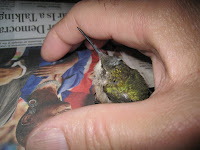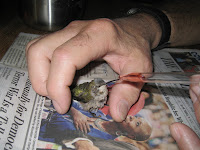 |
| Brown tree snake- Wikimedia |
And that ain't what it takes to love me
You fool, you fool" -Jim Stafford
Can a venomous snake become the spider's best friend? A story from discovery.com shows how complex the changes in the food chain can be following the arrival of a foreign snake species.
The culprit is the brown tree snake (Boiga irregularis), a native of Australia and Papua New Guinea which arrived on Guam after 1946, presumably as inadvertent ship cargo. It has depleted or destroyed many species of native birds and mammals which are naive to the danger and have no natural defenses.
In addition to birds and mammals, according to Wikipedia it has caused "thousands of power outages affecting private, commercial, and military activities; widespread loss of domestic birds and pets; and considerable emotional trauma to residents and visitors alike when snakes invaded human habitats with the potential for envenomation of small children."*
A new study in discovery.com describes a tremendous increase in the number of spiders on Guam, with up to 40 times as many as other surrounding Pacific islands. Much of this has been attributed to decreases in the bird population due to predation by the brown tree snake. Birds are major predators of spiders and insects, and small experiments had previously shown that a decline in birds could cause an increase in spider populations. The surprise here was the dramatic explosion of the spider population.
Islands are particularly vulnerable to predatory invasives. The resident species have evolved for thousands of years before humans' vessels delivered their dangerous cargoes. Goats brought for food and the accidental delivery of rats and other invasive species to the Galapagos Islands are familiar examples of this problem.
The brown tree snake is nocturnal, adroit at climbing trees, and normally preys on birds, bats and small mammals. On Guam they found a smorgasbord of naive birds ready for their picking. They also left their normal predators behind in Australia. They normally grow up to 6 feet in length but in their new paradise some have grown up to 9.8 feet long.
Their venom is relatively weak and their fangs are located further back in their jaws. The snakes tend to be aggressive and the venom is injected slowly by capillary action with a chewing motion when their jaws are spread widely. For this reason they pose little risk humans except for small children.
Major eradication efforts are under way and there is some evidence that the brown tree snake population is stabilizing or decreasing in the face of stress factors and declining food resources. This latest study simply shows how much effect a recognized invasive species can have on less obvious parts of the food chain.
* Wikipedia




























